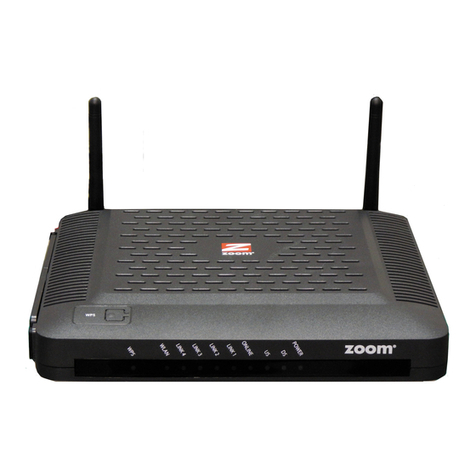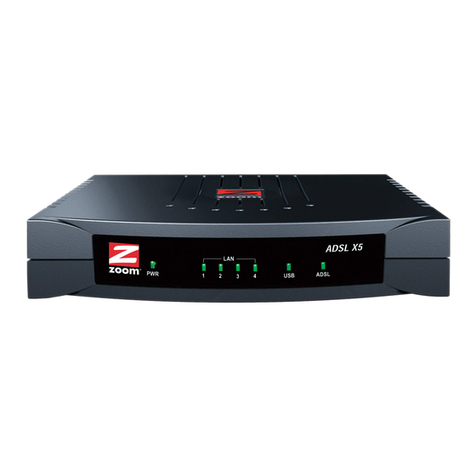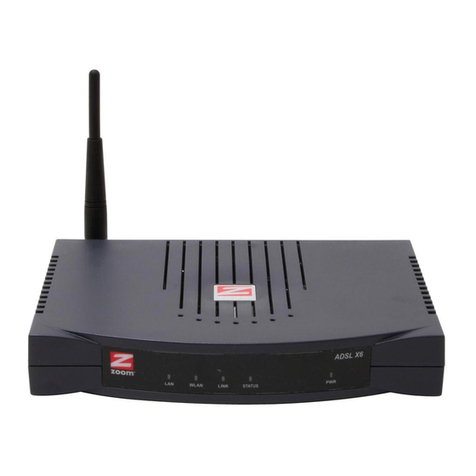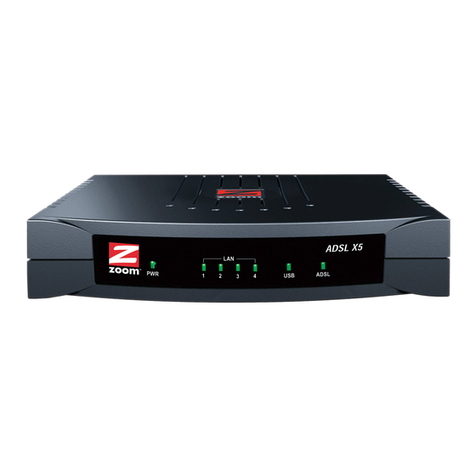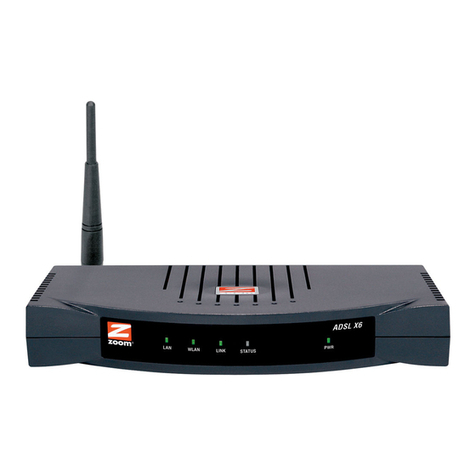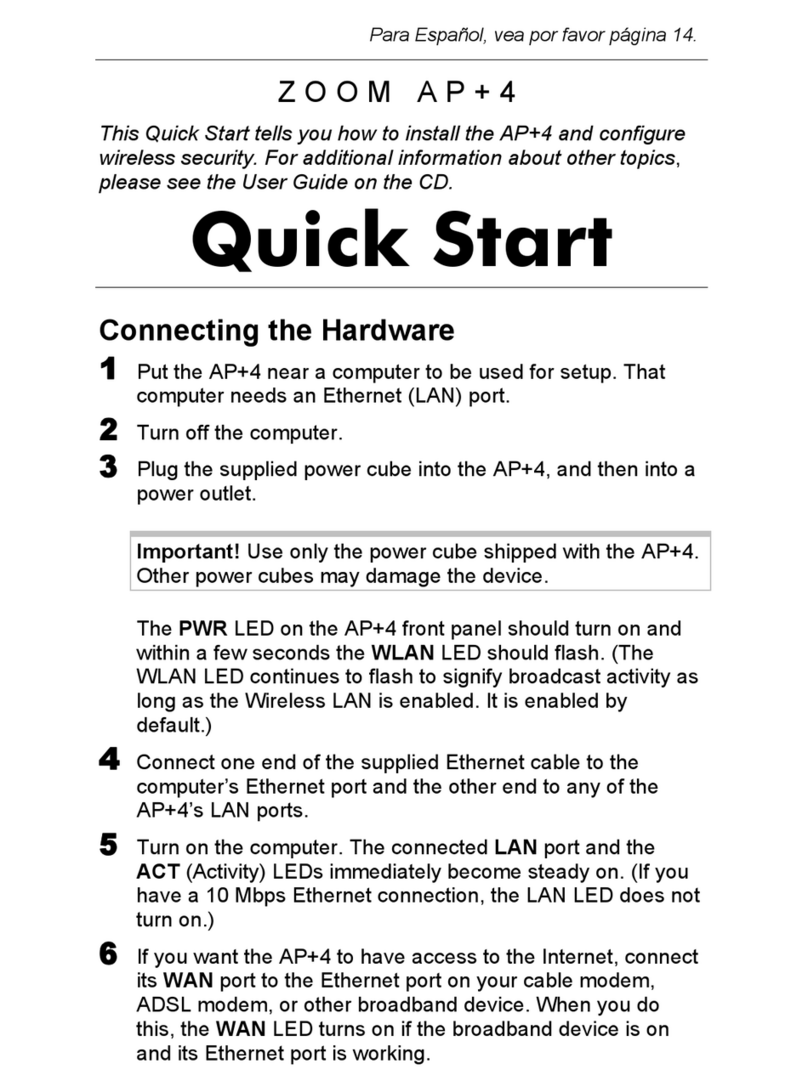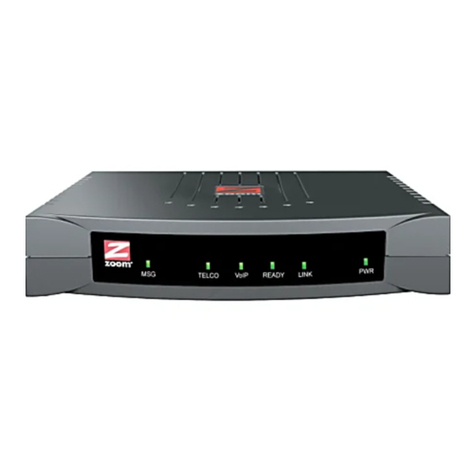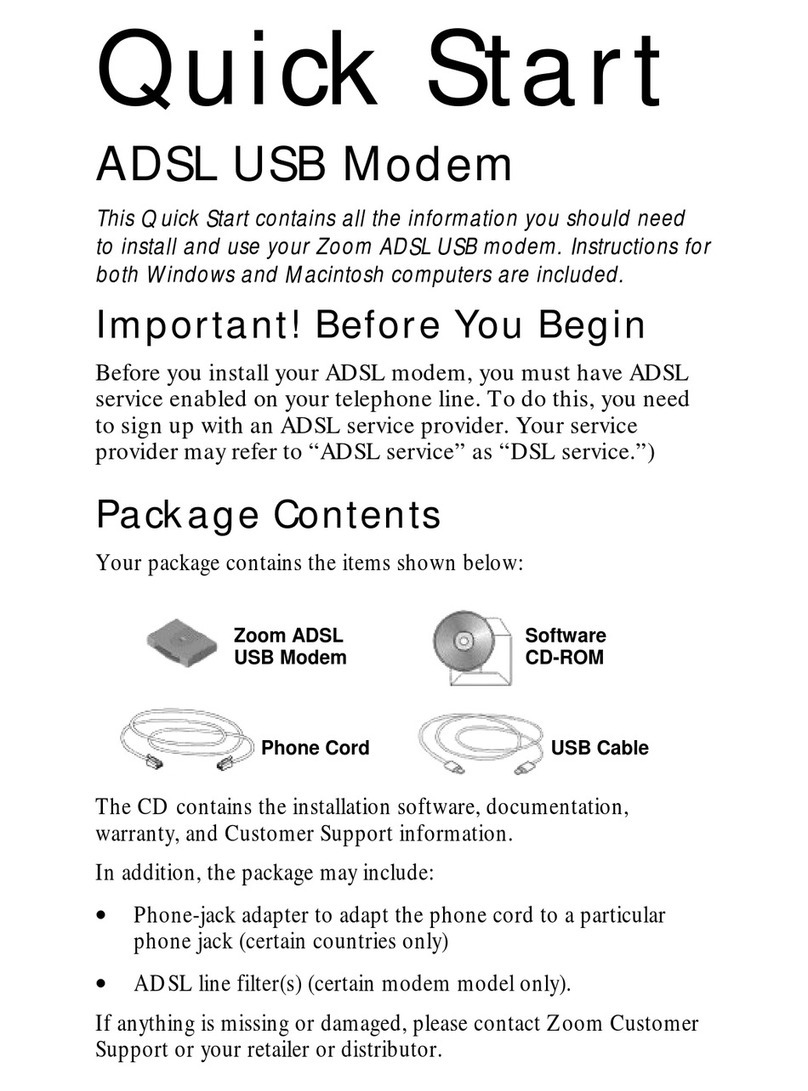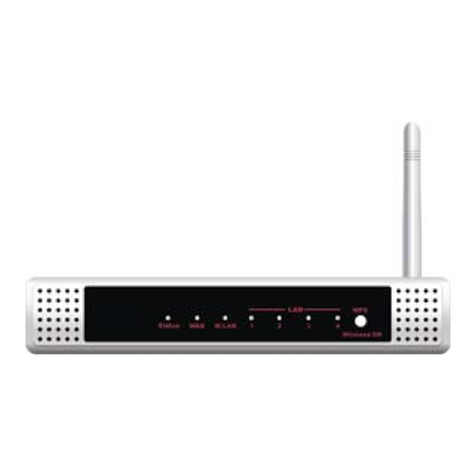Zoom ADSL X4 User manual
Other Zoom Network Router manuals
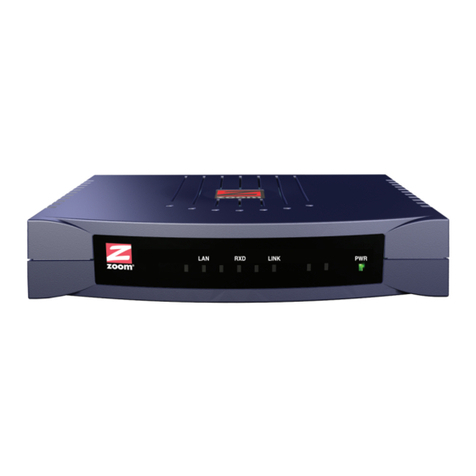
Zoom
Zoom Zoom ADSL X4 5551 User manual
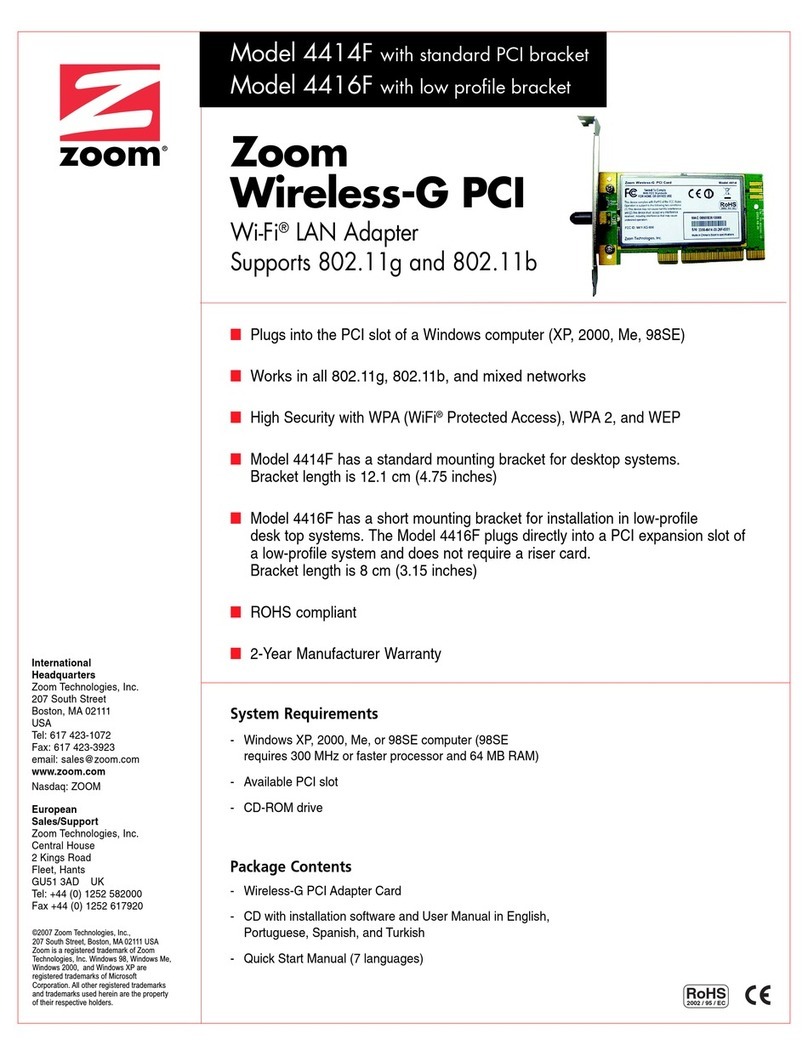
Zoom
Zoom 4414F User manual
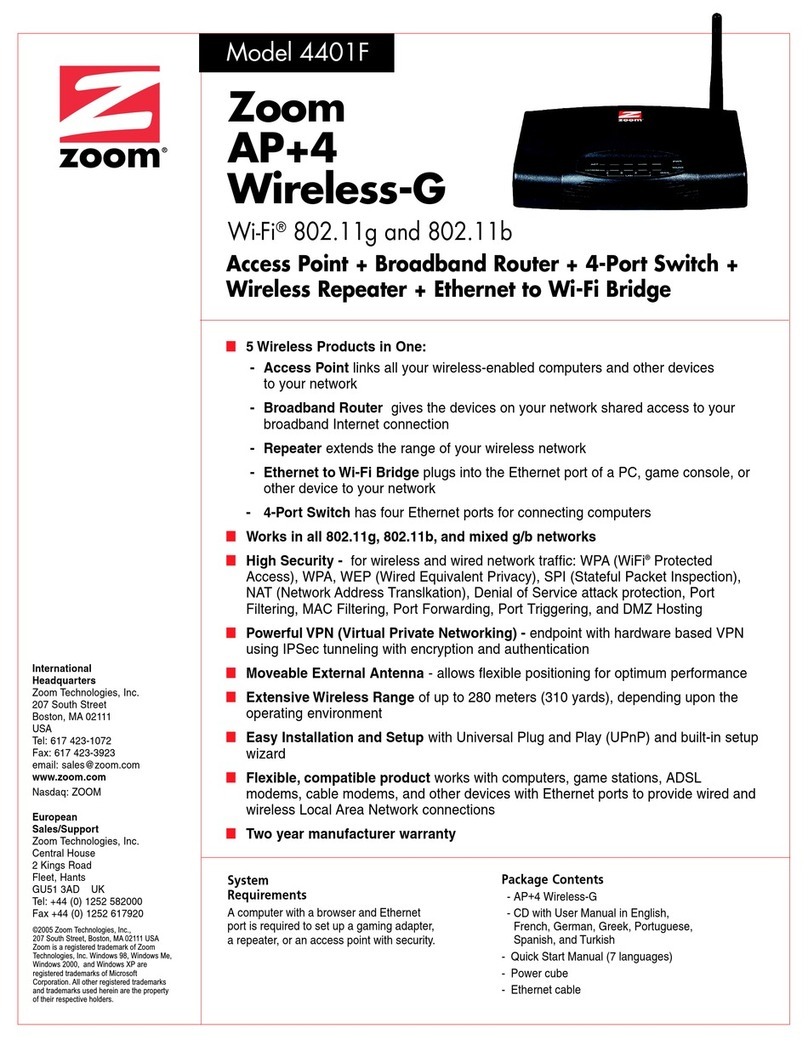
Zoom
Zoom 4401F User manual

Zoom
Zoom 4403 User manual
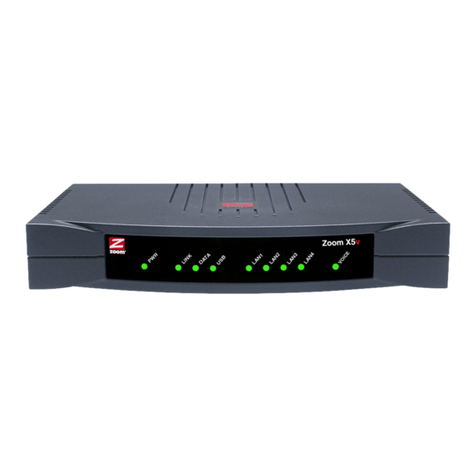
Zoom
Zoom ZoomTel ADSL X5v 5585 User manual

Zoom
Zoom ADSL X5v 5565 User manual
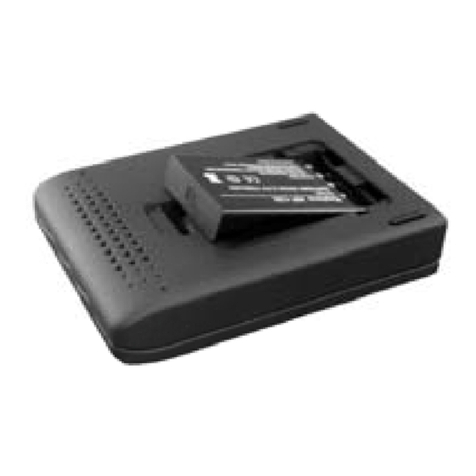
Zoom
Zoom WR1096 User manual

Zoom
Zoom 5524 User manual
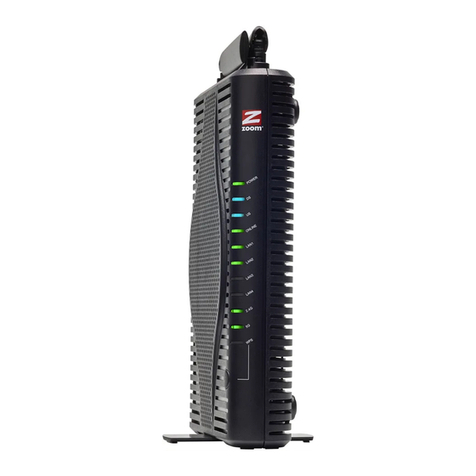
Zoom
Zoom 5360 User manual
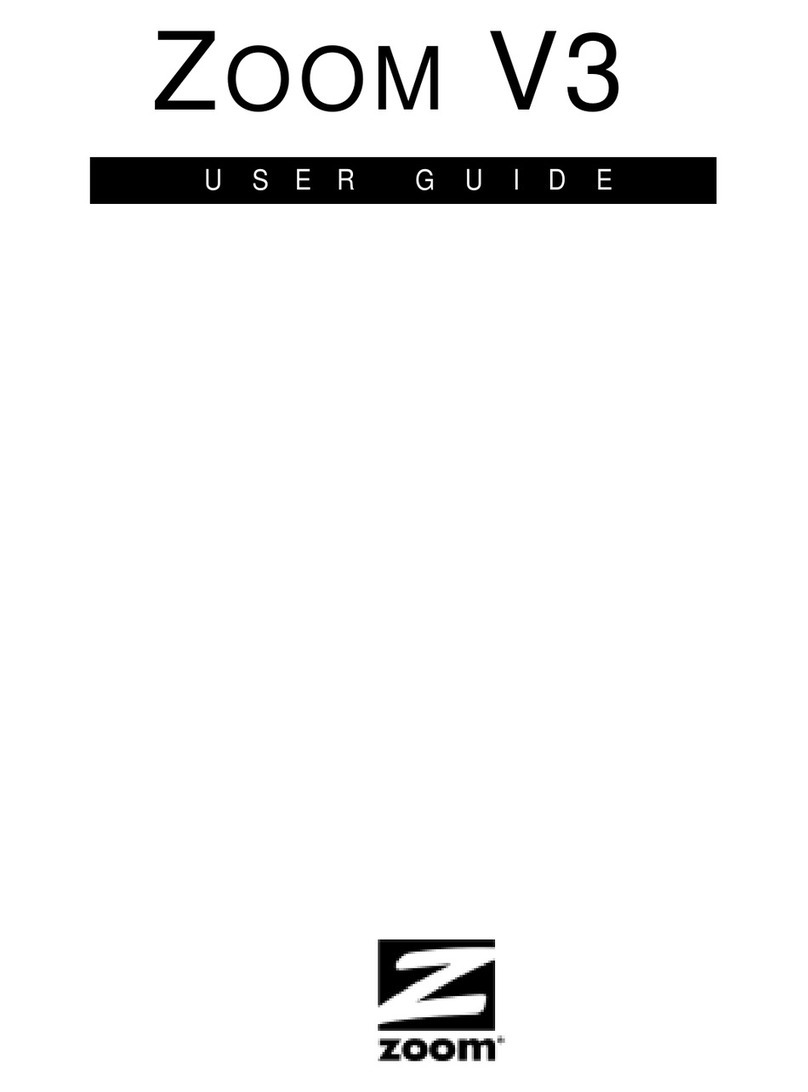
Zoom
Zoom Gateway/Router V3 User manual
Popular Network Router manuals by other brands

TRENDnet
TRENDnet TEW-435BRM - 54MBPS 802.11G Adsl Firewall M Quick installation guide

Siemens
Siemens SIMOTICS CONNECT 400 manual

Alfa Network
Alfa Network ADS-R02 Specifications

Barracuda Networks
Barracuda Networks Link Balancer quick start guide

ZyXEL Communications
ZyXEL Communications ES-2024PWR Support notes

HPE
HPE FlexNetwork 5510 HI Series Openflow configuration guide

